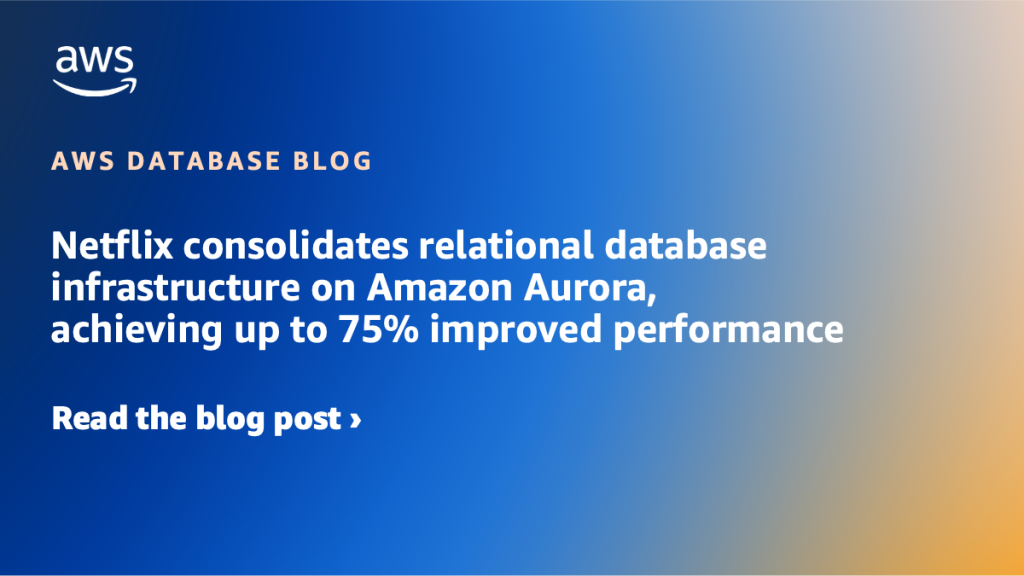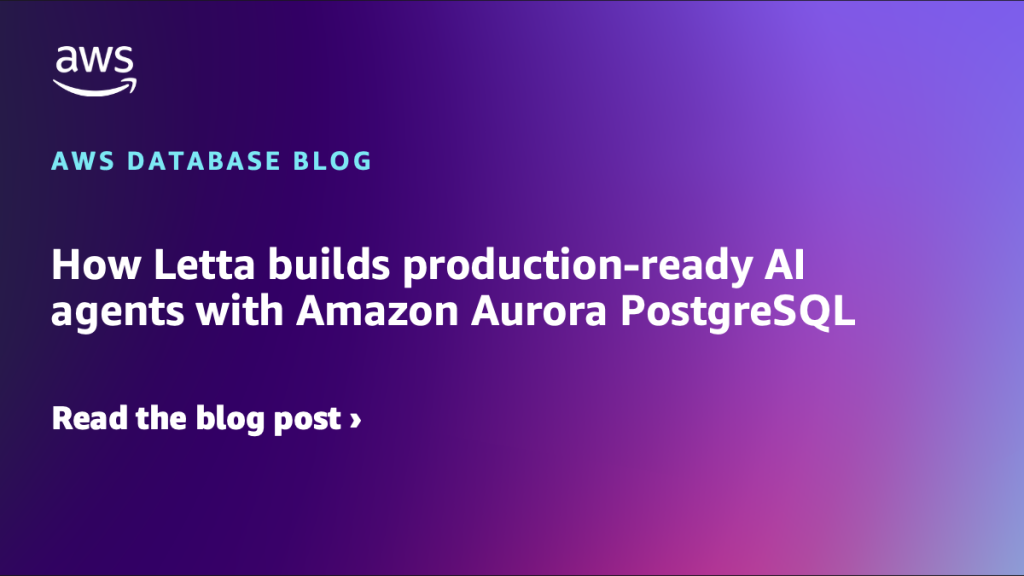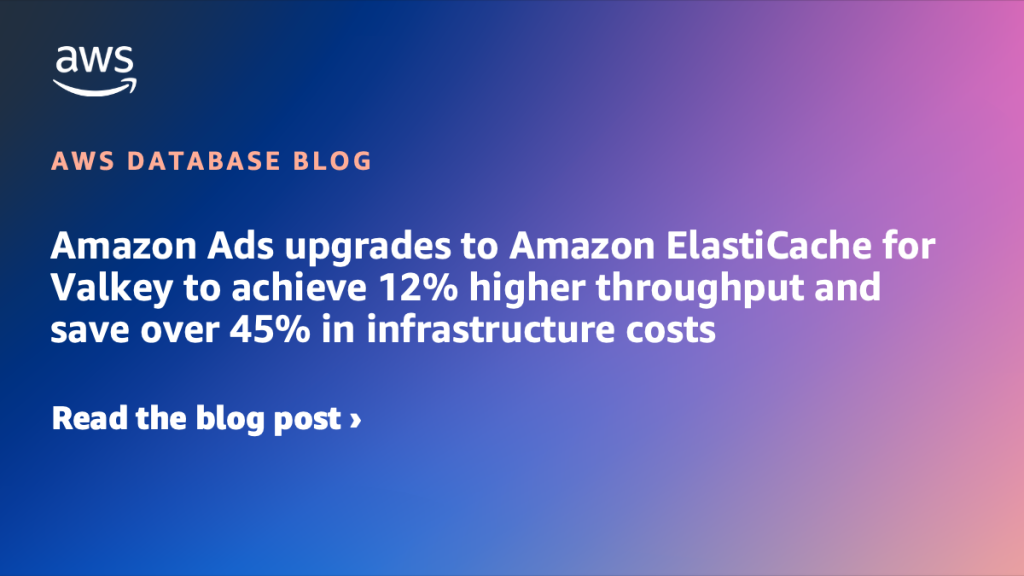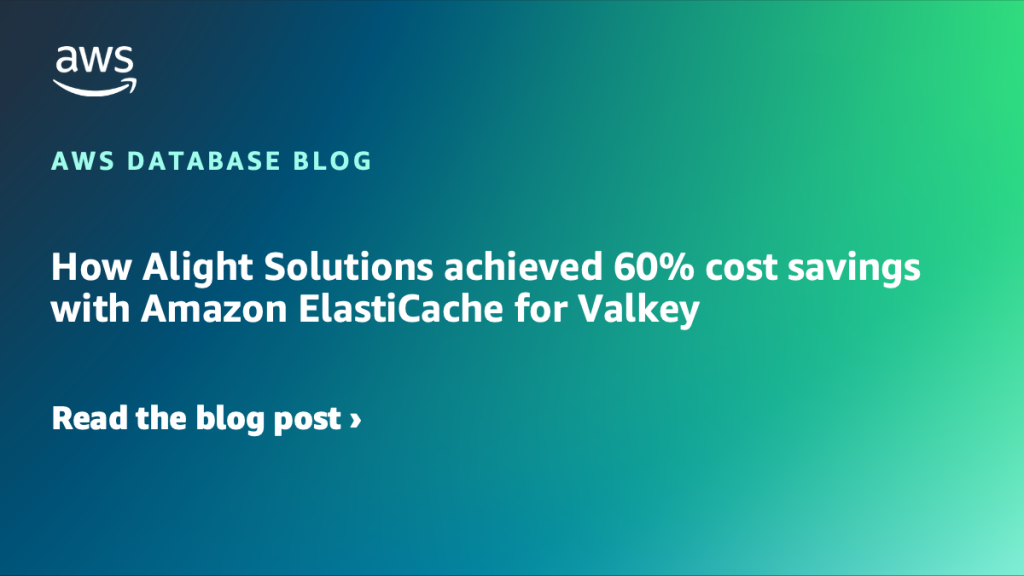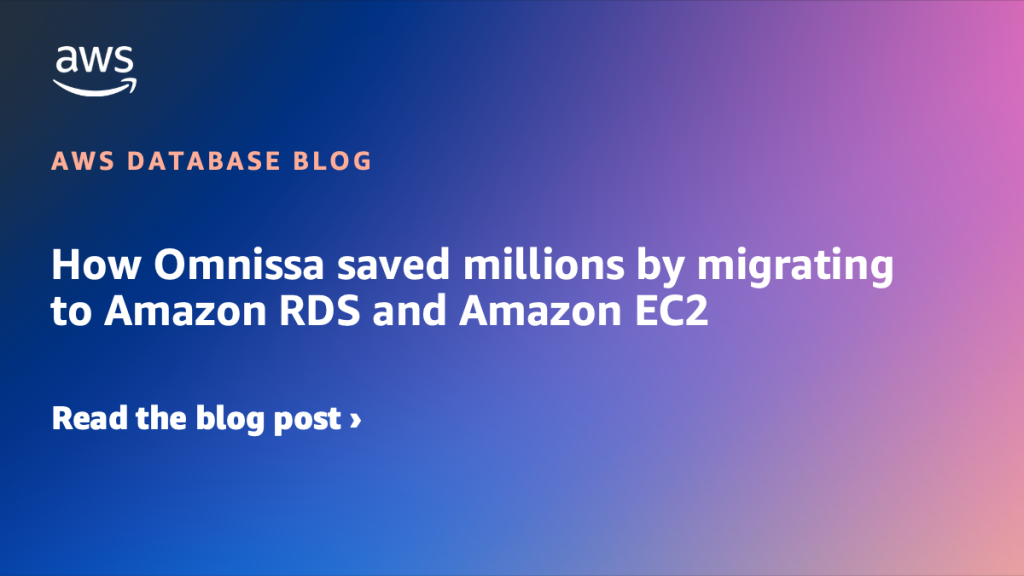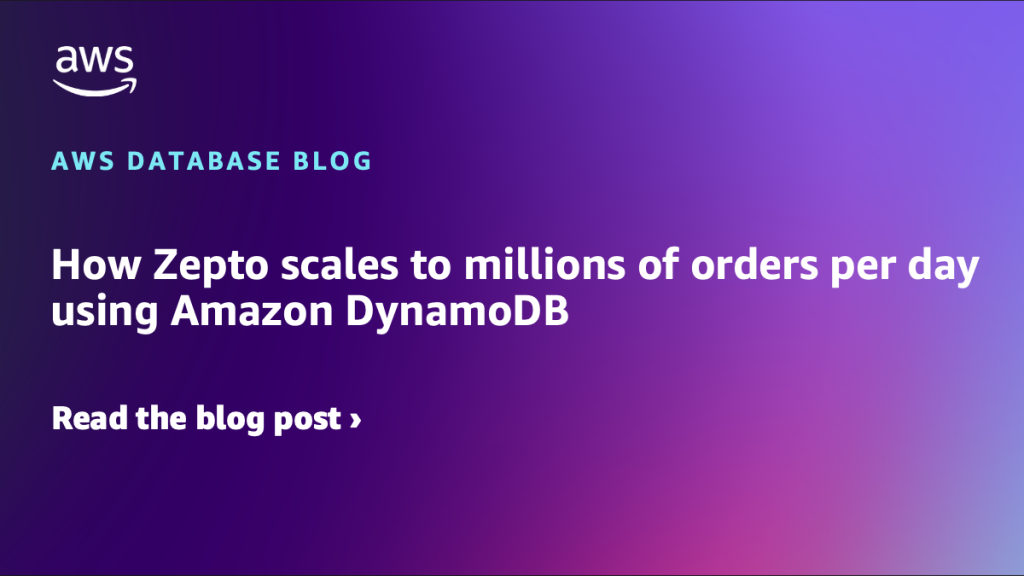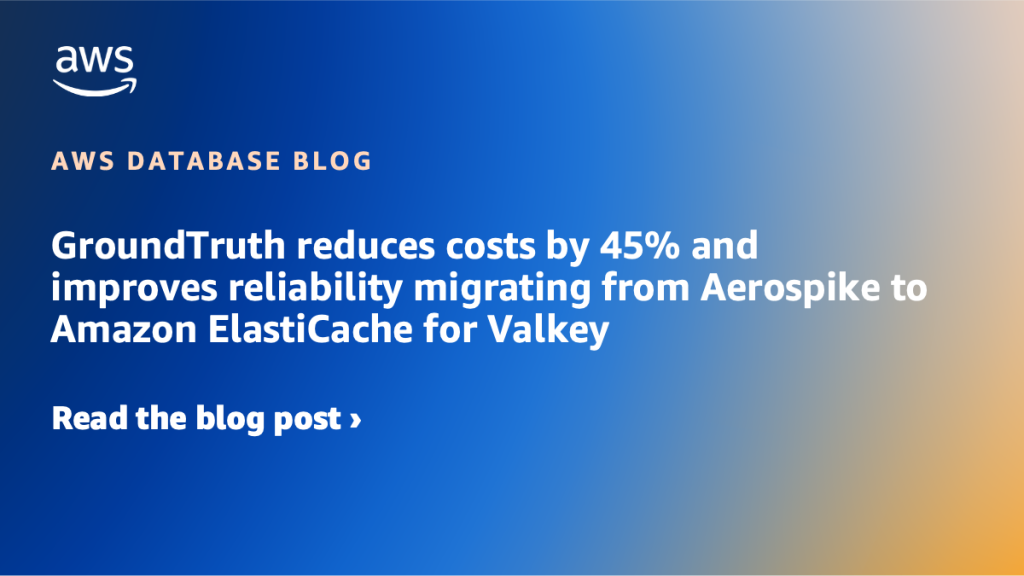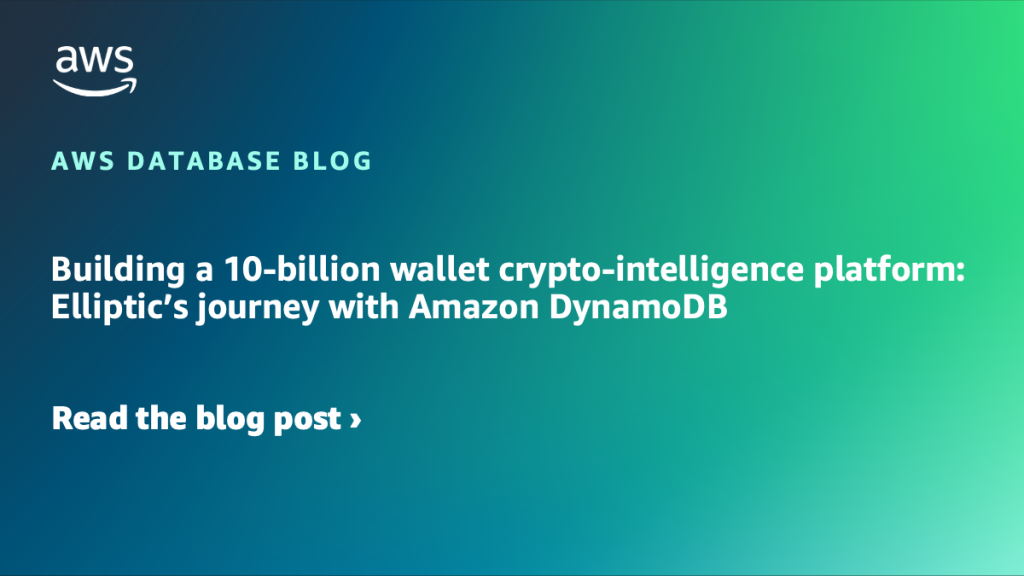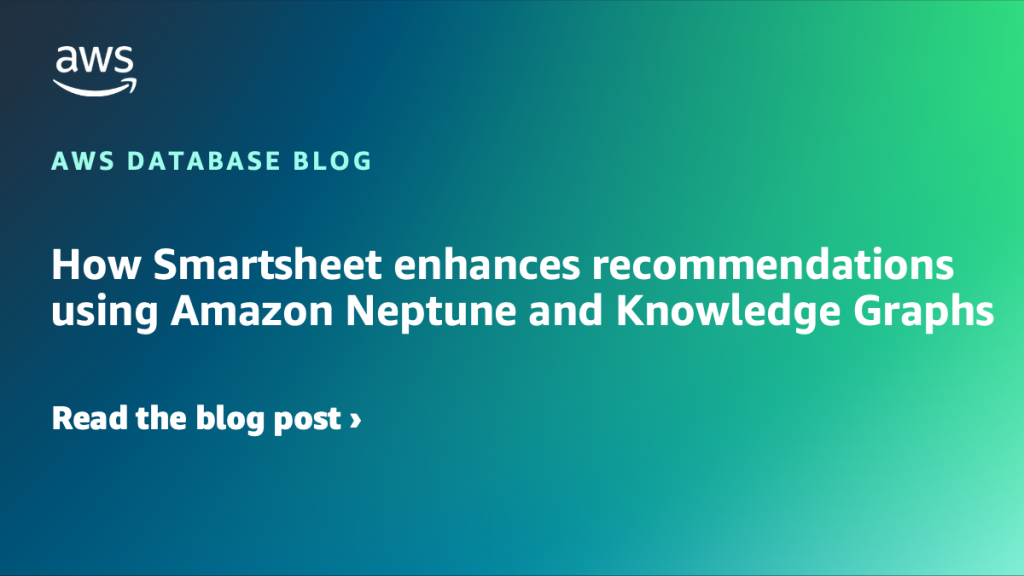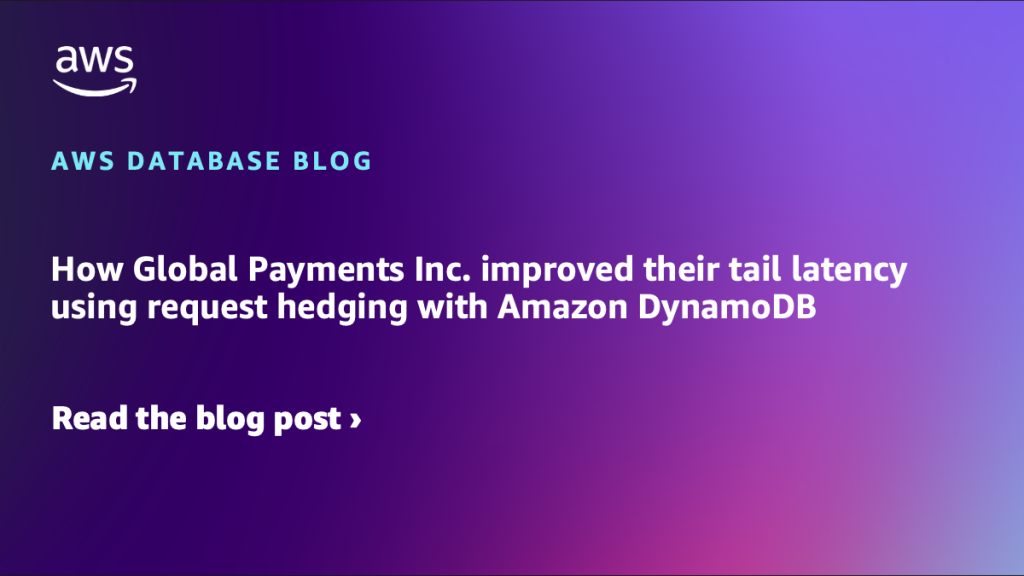AWS Database Blog
Category: Customer Solutions
Netflix consolidates relational database infrastructure on Amazon Aurora, achieving up to 75% improved performance
Netflix operates a global streaming service that serves hundreds of millions of users through a distributed microservices architecture. In this post, we examine the technical and operational challenges encountered by their Online Data Stores (ODS) team with their current self-managed distributed PostgreSQL-compatible database, the evaluation criteria used to select a database solution, and why they chose to migrate to Amazon Aurora PostgreSQL to meet their current and future performance needs. The migration to Aurora PostgreSQL improved their database infrastructure, achieving up to 75% increase in performance and 28% cost savings across critical applications.
How Letta builds production-ready AI agents with Amazon Aurora PostgreSQL
With the Letta Developer Platform, you can create stateful agents with built-in context management (compaction, context rewriting, and context offloading) and persistence. Using the Letta API, you can create agents that are long-lived or achieve complex tasks without worrying about context overflow or model lock-in. In this post, we guide you through setting up Amazon Aurora Serverless as a database repository for storing Letta long-term memory. We show how to create an Aurora cluster in the cloud, configure Letta to connect to it, and deploy agents that persist their memory to Aurora. We also explore how to query the database directly to view agent state.
Amazon Ads upgrades to Amazon ElastiCache for Valkey to achieve 12% higher throughput and save over 45% in infrastructure costs
Amazon Ads enables businesses to meaningfully engage with customers throughout their shopping journey, reaching over 300 million audience in the US alone. Delivering the right ad to the right customer in real time at a global scale requires highly available, low-latency infrastructure capable of processing tens of millions of requests per second. In this post, […]
How Alight Solutions achieved 60% cost savings with Amazon ElastiCache for Valkey
Alight Solutions is a leading cloud-based human capital technology and services provider that has focused its operations on integrated benefits administration, healthcare navigation, and employee experience solutions. In this post, we share how Alight Solutions transformed their caching infrastructure using ElastiCache while maintaining strict performance requirements, achieving over 60% cost reduction, 70-80% reduction in operational overhead, migration of gigabytes of data with sub-0.5 millisecond performance for millions of users, and a 99.99% reduction in incident rate.
How Omnissa saved millions by migrating to Amazon RDS and Amazon EC2
Omnissa is a digital workspace technology leader that delivers smart, seamless, and secure digital work experiences for organizations worldwide. It serves 26,000 customers, including the top seven of the Fortune 500 companies. In this post, we walk through the Omnissa’s journey of migrating its mission-critical UEM platform and self-managed SQL Server workloads from VMware Cloud on AWS (VMC-A) to Amazon RDS for SQL Server and its application servers to Amazon EC2.
How Zepto scales to millions of orders per day using Amazon DynamoDB
In this post, we describe how Zepto transformed its data infrastructure from a centralized relational database to a distributed system for select use cases. We discuss the challenges encountered with Zepto’s original architecture to support the business scale, the shift towards using key-value storage for cases where eventual consistency was acceptable, and Zepto’s adoption of Amazon DynamoDB.
GroundTruth reduces costs by 45% and improves reliability migrating from Aerospike to Amazon ElastiCache for Valkey
GroundTruth, an advertising platform leading the way in location- and behavior-based marketing, empowers brands to connect with consumers through real-world behavioral data to drive real business results. As our advertising platform scaled to process increased volume of ad requests and third-party segment ingestion, maintaining our Aerospike-based caching infrastructure introduced significant operational complexity and rising costs, while also compromising performance and limiting our ability to scale efficiently. To meet our requirements we implemented Amazon ElastiCache for Valkey, which streamlined our operations, improved reliability, and reduced costs. In this post, we walk through our migration journey, covering the migration strategy we adopted, the optimizations we made to reduce cost by 45%, reliability improvements including reducing write failures by 20x, and operational gains from managed service capabilities.
Building a 10-billion wallet crypto-intelligence platform: Elliptic’s journey with Amazon DynamoDB
In this post, we explore how Elliptic uses Amazon DynamoDB to build a crypto-intelligence platform that scales to over 10 billion wallets globally and supports real-time risk detection across the fast-evolving digital asset ecosystem. We discuss the data model design, indexing strategies, and operational setup that Elliptic uses to power real-time risk analysis and complex investigations at scale.
How Smartsheet enhances recommendations using Amazon Neptune and Knowledge Graphs
Smartsheet is a leading SaaS-based collaborative work management platform trusted by enterprises worldwide to manage projects, automate workflows, and drive collaboration at scale. In this post, we describe the Smartsheet Knowledge Graph, built in partnership between Smartsheet and AWS. The Smartsheet Knowledge Graph is a unified data model connecting people, content, and work in Smartsheet, representing how users interact with assets, content, and their collaborators.
How Global Payments Inc. improved their tail latency using request hedging with Amazon DynamoDB
Amazon DynamoDB delivers consistent single-digit millisecond performance at any scale, making it ideal for mission-critical workloads. However, as with any distributed system, a small percentage of requests may experience significantly longer response times than the average. This phenomenon, known as tail latency, refers to these slower outliers that can be seen by looking at metrics such as the 99th or 99.9th percentile of response times. In this post, we explore how Global Payments Inc. (GPN) reduced their tail latency by 30% using request hedging. We review the technical details and challenges they faced, providing insights into how you can optimize your own latency-sensitive applications. In a next post we’ll share detailed implementation examples.
